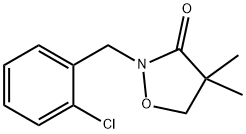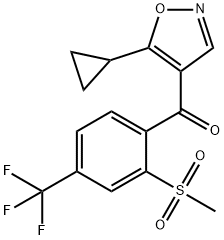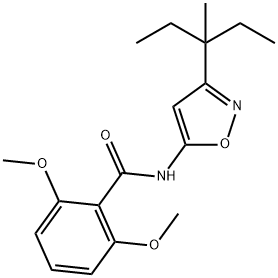Clomazone , Analysis standard product, 98% , 81777-89-1
| Pack Size | Price | Stock | Quantity |
| 100MG | RMB719.20 | In Stock |
|
| others | Enquire |
PRODUCT Properties
| Melting point: | 25°C |
| Boiling point: | 275.4°C |
| Density | 1.192 |
| refractive index | 1.5388 (estimate) |
| Flash point: | 157 °C |
| storage temp. | Sealed in dry,2-8°C |
| solubility | DMF: 33 mg/ml,DMSO: 16 mg/ml,Ethanol: 33 mg/ml,PBS (pH 7.2): 1 mg/ml |
| form | Solid |
| pka | -1.48±0.40(Predicted) |
| color | White to off-white |
| Water Solubility | 1.101g/L(temperature not stated) |
| BRN | 7480026 |
| InChIKey | KIEDNEWSYUYDSN-UHFFFAOYSA-N |
| CAS DataBase Reference | 81777-89-1(CAS DataBase Reference) |
| NIST Chemistry Reference | Dimethazone(81777-89-1) |
| EPA Substance Registry System | Clomazone (81777-89-1) |
Description and Uses
The molecular target site of clomazone has recently been determined. With clomazone, carotenoid synthesis is inhibited, but no intermediates in the carotenoidcommitted portion of the pathway accumulate (5,6). Synthesis of the derivatives of GGPP (gibberellic acid, phytol, carotenoids) is inhibited by clomazone (5–8). However, the synthesis of certain sesquiterpenoids and triterpenoids is not inhibited (9). Until recently, there was no credible report of the effect of clomazone on any enzyme of the terpenoid pathway (10–12). This was due to the fact that clomazone is a proherbicide and that the proper enzyme had not been tested.
Herbicide.
Safety
| Symbol(GHS) |   GHS07,GHS09 |
| Signal word | Warning |
| Hazard statements | H302+H332-H410 |
| Precautionary statements | P273-P301+P312+P330-P304+P340+P312 |
| Hazard Codes | Xn |
| Risk Statements | 20/22-36/38 |
| Safety Statements | 26-36 |
| RIDADR | 2902 |
| WGK Germany | 2 |
| RTECS | NY2977000 |
| HazardClass | 6.1(b) |
| PackingGroup | III |
| Hazardous Substances Data | 81777-89-1(Hazardous Substances Data) |
| Toxicity | LD50 in male rats, female rats, mallard duck-bobwhite quail (mg/kg): 2077, 1369, >2510 orally; in rabbits (mg/kg): >2000 dermally (Chen) |



